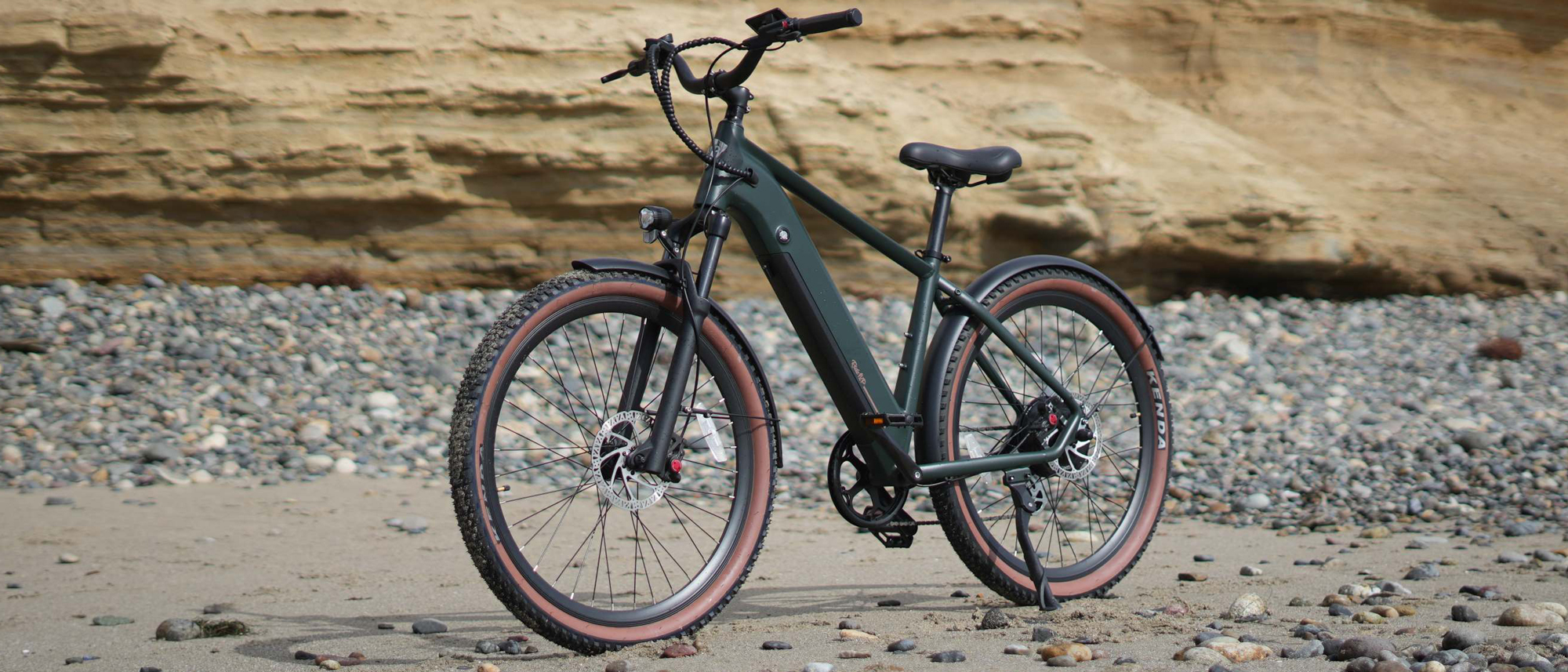Tom's Guide Verdict
A great value commuter bike, the Ride1Up Turris can handle multi-surface riding and features excellent pedal-assist power.
Pros
- +
Good assist power when pedaling
- +
Great price
- +
Comfortable to ride
Cons
- -
Suspension fork feels unnecessary
Why you can trust Tom's Guide
Weight: 55 lbs
Motor: 750-watt, 48V, 60Nm torque
Battery: 48V, 12.8Ah Reention Prism, LG cells
Range: Up to 45 miles
Max assist speed: 28mph
Assist modes: 5
Drivetrain: Shimano 7-speed
Max weight capacity: 300 lbs
Ride1Up’s Turris will surprise you the second you start pedaling. A powerful, 750-Watt motor kicks in almost immediately, with far more punch than you might expect from a bike at this price. That’s likely what Ride1Up was going for: a lot of excellent features packed into a value bike.
Yet the Turris does not feel like a value bike (which is to say, the ride feels solid and well built). While it’s by no means the perfect commuter and has some drawbacks — most notably the suspension fork — the Turris punches well above its stature thanks to a smart spec, great motor, and comfortable riding position. Among the best budget electric bikes, it’s definitely worth your consideration.
Ride1Up Turris review: price and availability
The Turris costs $1,295 and is available for purchase on the Ride1Up website. If you're in the continental United States, shipping is free. For delivery to Hawaii and Alaska, delivery costs $600, while shipping to Canada sets you back $100.
As it's a high-ticket purchase, you can use payment plans from Affirm to spread the cost, or use PayPal's financing options to pay the balance in instalments.
Ride1Up Turris review: design
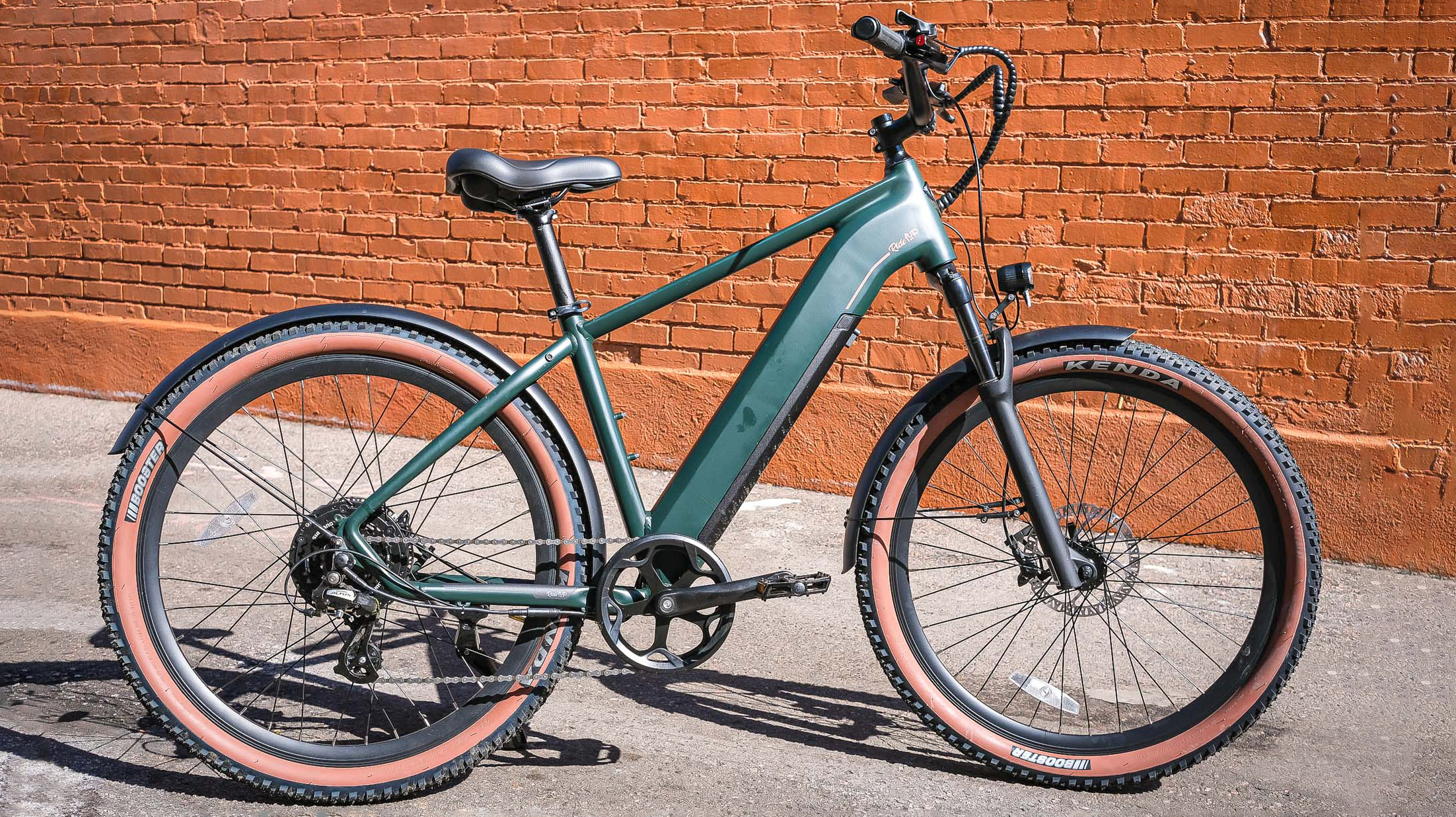
The Turris is built around an aluminum frame that is available in two designs: step-over, or step-thru. The step-thru design is more appropriate for shorter riders. Both designs keep the rider in an upright riding position for more comfort.
The removable battery is integrated into the bike’s down tube, but you do not need to remove the battery from the frame in order to charge it. Ride1Up thoughtfully includes two keys, in case you happen to misplace one.
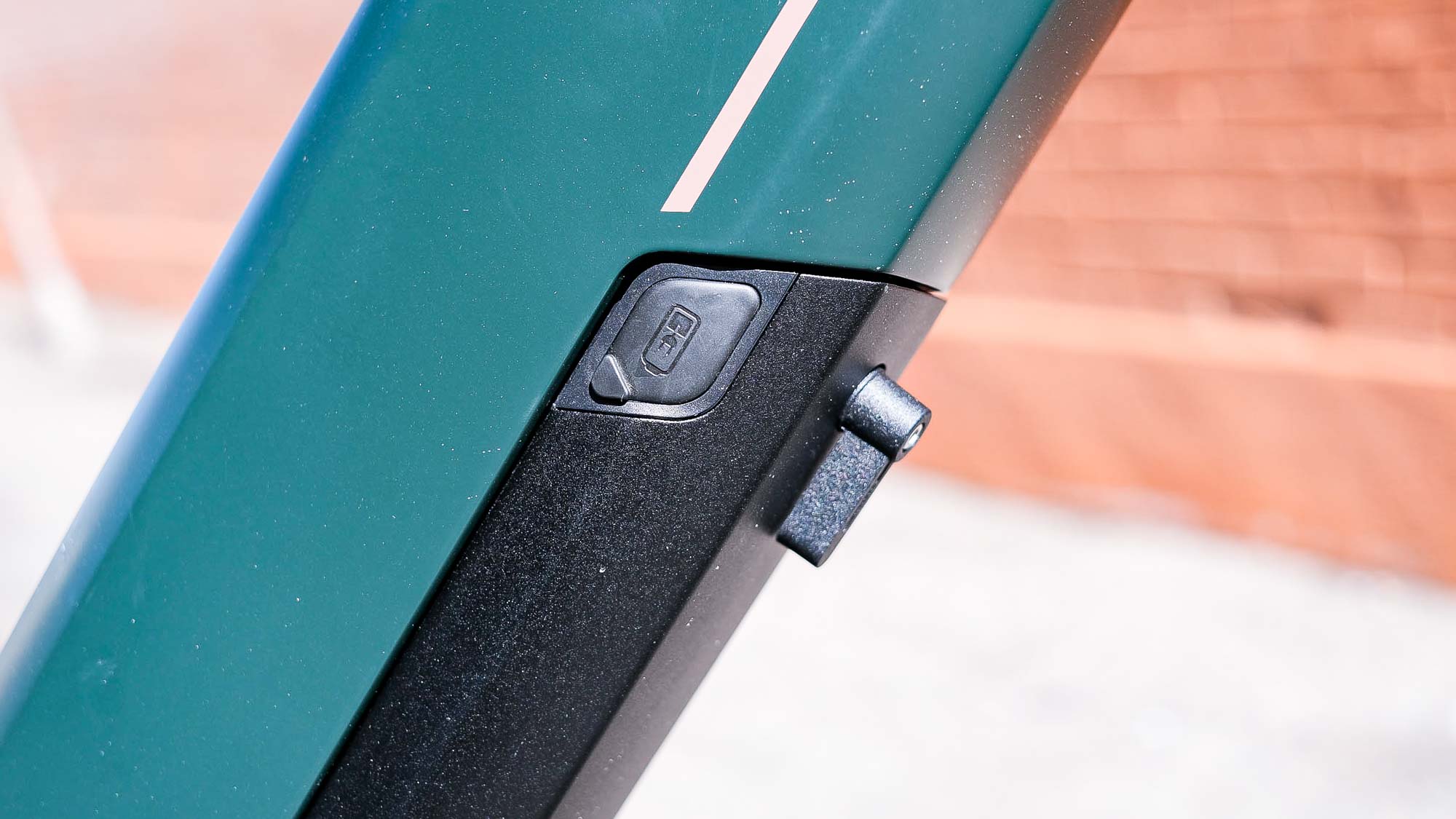
The Turris’s motor lives in the rear hub. It’s plenty powerful, offering 750W and 65Nm of torque. To further tailor your pedaling cadence or effort, the Turris comes equipped with a Shimano 7-speed drivetrain.
Get instant access to breaking news, the hottest reviews, great deals and helpful tips.
While you can use the pedaling assist mode up to 28mph, the throttle assist cuts out at 20mph. The assist modes can be changed using the handlebar-mounted LCD display.
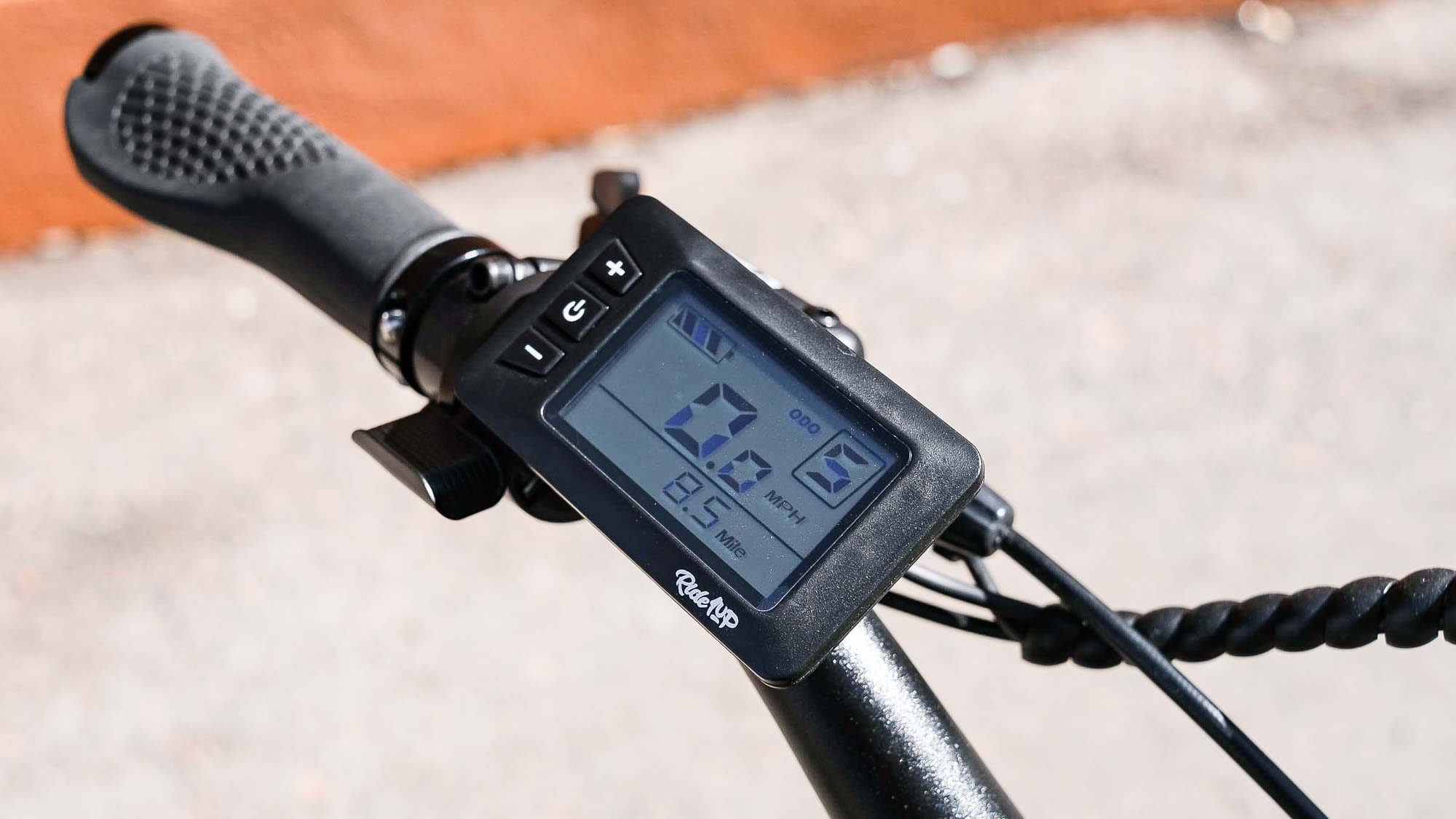
The Turris comes well-loaded with useful accessories, like front and rear fenders, a 60 Lux headlight, an adjustable kickstand, and wide, 27.5 x 2.4-inch tires for multi-surface riding.
The Turris also features a front suspension fork that offers 100mm of travel to take the edge off chatter and big bumps. Notably, the Turris also features Zoom hydraulic disc brakes, a nice inclusion at this pricepoint.
Ride1Up Turris review: performance

Once unboxed, you need to assemble the bike. The Turris definitely isn’t a straightforward build; my test bike came with the fork uninstalled, as well as one crank arm, among other things. If you have never built a bike before, you may want to take the bike to a shop to get it built correctly.
Once I got pedaling, the Turris became an easy bike to enjoy. The assist kicks in quickly when you apply pedaling force, and only slightly less quickly when you throw on the throttle. I was surprised by how strong the motor felt on the higher settings (3-5).
I took the Turris to a moderately steep hill to see how it'd handle starting from a dead stop on an incline. It did well, getting going with the help of both the throttle and the pedal-assist, with the gear shifter set to one of the easiest gears. But the throttle got bogged down when I tried to start without using the pedal assist.
That held true on longer but less steep climbs. While the throttle alone got me to the top, the assist kicked in with far more vigor if I applied power to the pedals.
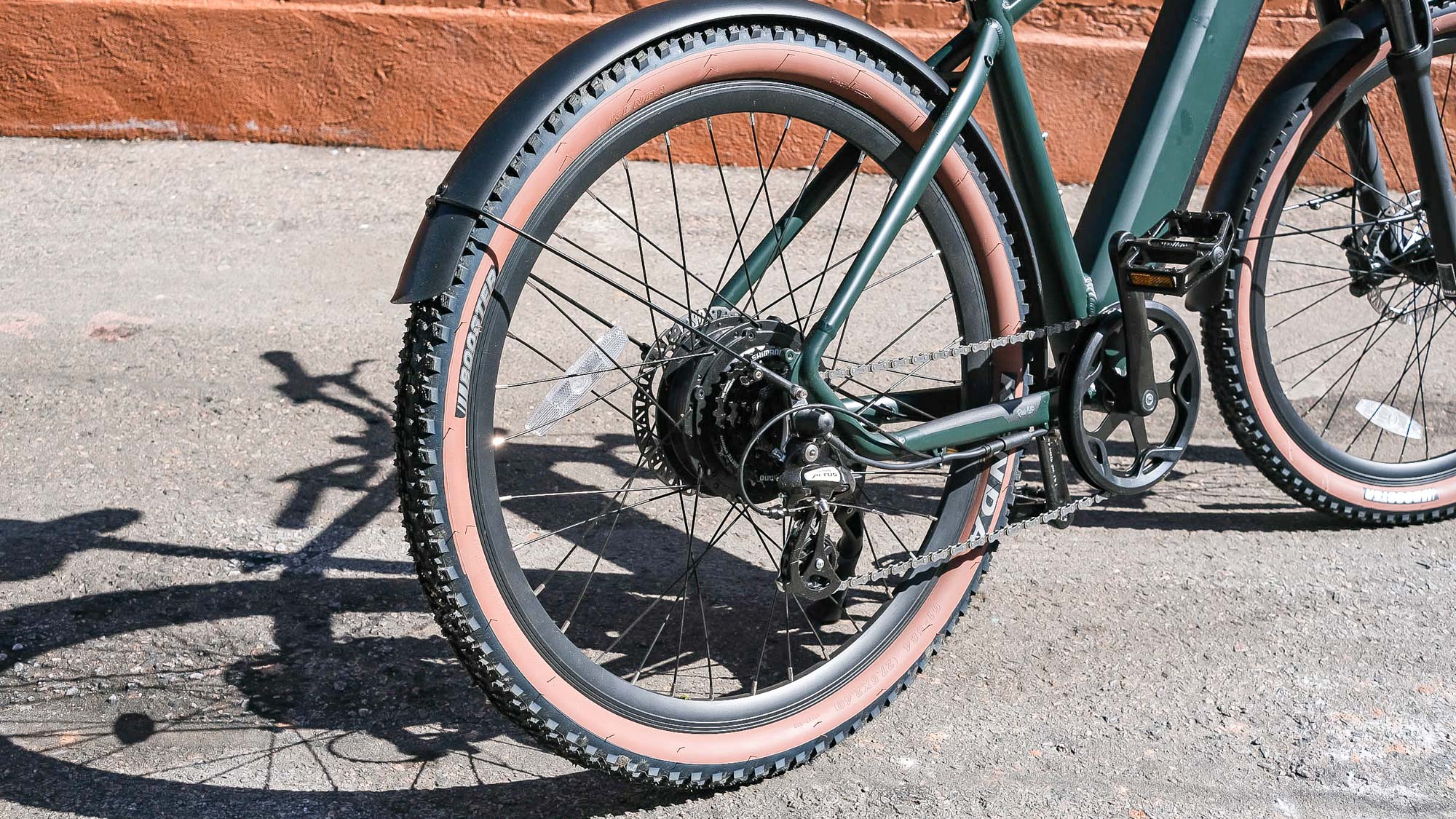
The Turris offers plenty of comfort, between the super-soft seat, suspension fork, and wide tires. But the suspension fork doesn’t feel very plush, especially on bigger hits when it feels like a very tight spring.
Ultimately, the Turris would probably be just as good of a bike with a rigid fork. The front suspension just doesn’t add enough advantage and can be distracting in the long run.
I rode the Turris the day after a snowstorm, and the sun came out to make a mucky mess of everything. I was glad to have the fenders, though it took some doing to get them adjusted properly so they didn’t rub on the tires. If they were just slightly wider, the tire rub could be avoided much more easily.
Ride1Up Turris review: battery life
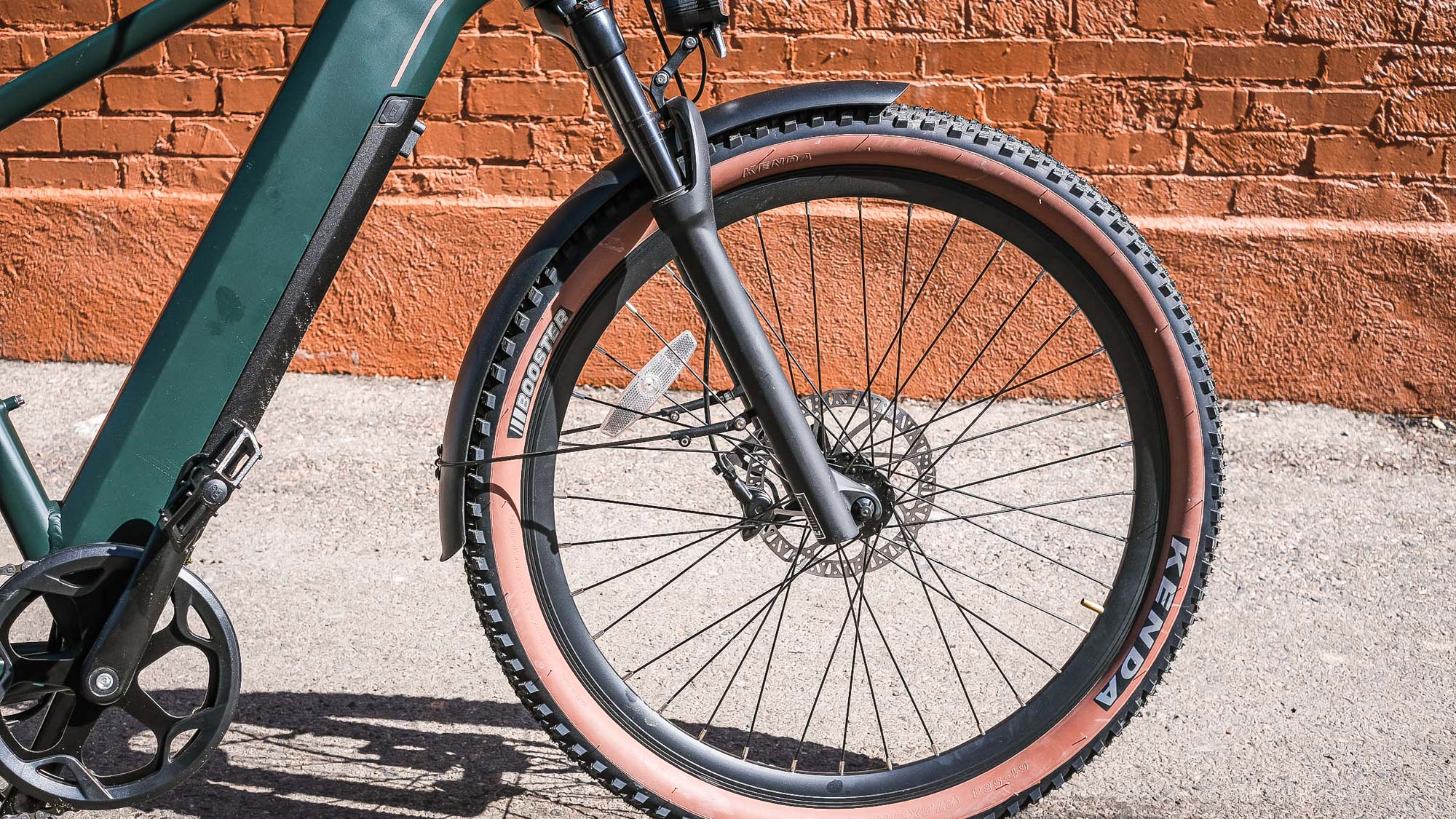
A 48V, 12.8Ah Reention Prism battery is integrated into the downtube of the Turris. It uses LG cells for reliability. Ride1Up advertises a 25-45-mile range on a single charge, which is fairly common among commuter bikes like this.
Your results will vary depending on a lot of factors, including the terrain on which you ride, the assist mode you use most often, throttle use, and even the weather. My first ride totaled 10.5 miles, and I was super heavy on the throttle.
I ended up using less than half the battery during that ride; most of the battery rundown came when I was full on the throttle up a sustained hill. Given that performance, Ride1Up’s advertised range seems accurate.
Should you buy the Ride1Up Turris?
For the price, Ride1Up offers a lot of great riding features in the Turris. While the suspension fork feels unnecessary and distracting, the rest of the bike is super comfortable and the motor assist offers unexpectedly strong power. If you’re after a reliable commuter without breaking the bank, the Turris deserves your attention.
However, the Propella 7S hits a similar price as the Turris at $1,199, and also makes a value-packed entry-level commuter ebike. The Propella has much narrower tires, however, and it is set up as a single-speed bike. The Turris has more gearing options and tires equipped for multi-surface riding.
Propella also offers the 9S Pro for $1,599, which has wider tires for multi-surface riding and a 9-speed drivetrain. But there’s no suspension fork or throttle, and the battery is mounted externally.

Dan Cavallari is the former technical editor for VeloNews Magazine, who currently reviews electric bikes, bike lights, and other bike accessories for Tom's Guide. In addition to VeloNews, his work has appeared in Triathlete Magazine, Rouleur Magazine, CyclingTips.com, Road Bike Action, Mountain Bike Action, CycleVolta.com, Tomsguide.com, and much more. Dan also hosts two podcasts on his site, Slow Guy on the Fast Ride: One is about cycling and other outdoor activities, while the other looks at mental health issues. Most recently, Dan also covered the 2022 Tour de France. Dan lives outside of Denver, Colorado with his family.
